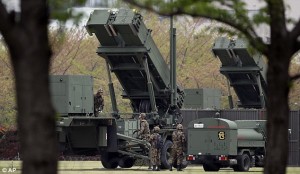 It’s the stuff of spy thrillers. From a few seconds of video, a handful of images and some satellite pictures, a team of researchers has been able to pinpoint two factories deep inside North Korea where the country assembles its mobile missile launchers.
It’s the stuff of spy thrillers. From a few seconds of video, a handful of images and some satellite pictures, a team of researchers has been able to pinpoint two factories deep inside North Korea where the country assembles its mobile missile launchers.
But what’s perhaps more remarkable is that they did it without any of the classified tools of the intelligence trade: The factories were located by tying together information that was already freely available on the Internet.
This is the world of open-source intelligence.
Researchers at companies, governments and institutions are increasingly harnessing freely available information to find secrets that might have remained hidden in the past. It’s not so much that the information is new, although there is much more of it now. It’s that it is now available to anyone with an Internet connection.
“Everything that we did, you could have done 50 years ago, but it would have been really, really difficult,” said Jeffrey Lewis, director of the East Asia program at the James Martin Center for Nonproliferation Studies at the Monterey Institute of International Studies.
The North Korean quest has its roots in a parade through Pyongyang on April 15, 2012, held to commemorate the birthday of the country’s founder, Kim Il Sung. A couple of decades ago, footage broadcast on state TV might have gone to a few government analysts, but now there’s YouTube and a network of overseas North Korean cheerleaders eager to upload it.
At this parade, one thing had analysts buzzing: six mobile launchers carrying KN-08 intercontinental ballistic missiles.
Bloggers in China quickly noted the similarities between the trucks and those used by the Chinese military, right down to the shape of the windows and the grille pattern. A brochure for the trucks was quickly circulating online.
Chinese officials denied exporting the launchers to North Korea – a serious violation of United Nations sanctions – but later admitted that manufacturer Wanshan Special Vehicle had exported the truck chassis for “civilian use.” Paperwork from the North Koreans claimed the trucks were needed for forestry work and the Chinese said the North Koreans must have assembled the launcher later.
“We started poking around,” said Lewis, speaking in Monterey, California, on Thursday.
Again, North Korean video on YouTube provided a clue.
A 2013 propaganda film, “Kim Jong Il’s efforts to defend the country,” contains four clips totaling 13 seconds that showed Kim Jong Il inside a factory alongside several missile launch vehicles.
“That’s all. That tiny, little clip is the only video we’ve ever seen from the inside or the outside of the place where it seems the North Koreans do the final assembly,” said Lewis.
But it proved to be enough.
Using dimensions of the trucks from that Chinese brochure, the size of the building could be estimated. A distinct set of windows halfway down pointed to a cupola – a glass cap over the top of the building – and the lack of any low-level windows indicated the building was either partially buried or blocked in.
Lewis’ colleague, research associate Melissa Hanham, produced a computer model of the structure, and researchers deduced something interesting: The clips apparently showed two similar but different buildings.
“That’s a weird-looking building,” said Lewis. “If I can get a satellite picture of that building, we’re going to recognise it. The question is, where do you start looking?”
Combing through all 120,000 square kilometres of the country would take a lot of time, so it was back to information that was already public.
North Korean defector memoirs pointed to military factories centred around Kanggye in the north of the country. One specifically mentioned a town called Hakmu, “where missile launchers are manufactured.” The town doesn’t appear on official maps but is mentioned in a World Health Organisation report and sufficiently well described that its location can be deduced.
The researchers also overlaid data from North Korea Uncovered, a Google Earth file that maps thousands of points of interest in the country, including anti-aircraft artillery batteries.
“Suddenly, Hakmu looks really interesting,” said Lewis, pointing to a small town on a satellite picture. “It’s a place that we know exists, that they don’t talk about very much, that’s in the heart of the defense industry, and it’s really well defended by surface-to-air missile sites.”
It wasn’t long before a building was found. The cupola is revealed to be a fan-like structure designed to allow the missile launcher to be fully erected while inside the factory. Google’s historical imagery showed that at some point the roof was changed, apparently to accommodate the KN-08 launchers.
So, were the two buildings the same structure? The researchers found a second, similar building nearbyand now believe some of the 13-second video might have been shot in the second building.
The last remaining question: Could the truck fit inside the building?
From the satellite pictures, the size of the building could be estimated more accurately than in the original TV pictures, and it turned out to be an exact fit for the launcher vehicles, Lewis said.
The researchers had found their building and located a second, similar one, and it had all been revealed with open-source information.
As for the original question of the export, the finding adds to the theory that the missile launchers are indeed assembled inside North Korea.
Full details of the project can be found on 38 North, the website of the U.S.-Korea Institute at Johns Hopkins University.





